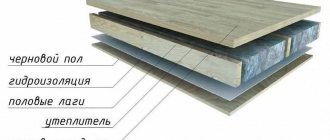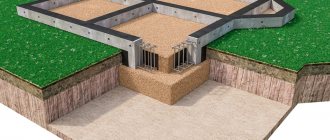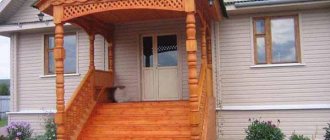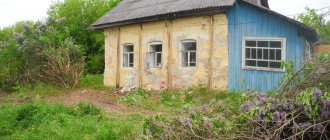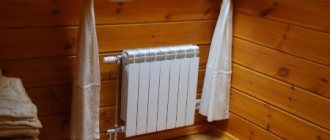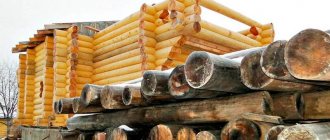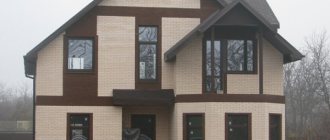The times when stove heating was the only means of heating a home and cooking food are long gone. Now many people prefer to heat their homes with gas or electric boilers, since they free the owner from having to worry about procuring fuel for the stove. This is convenient, but there are people who cannot imagine a private home without a stove. She will always help heat the room, prepare food, and she is not afraid of power or gas outages.
A properly made stand and an appropriate hood will allow you to place the stove even in the living room of a wooden house, where the warmth of the hearth will warm the whole family more than once Source smokenfire.com
Stove heating is still relevant
Despite the fact that now there are many ways to heat your home, a stove for heating a home does not lose its relevance. Beautifully made of brick, lined with stone or decorative tiles, the stove perfectly complements the interior of the house. A cast iron stove or fireplace also fits perfectly into the overall interior. Many people cannot even imagine their home without a good Russian stove. After all, how nice it is to warm up near the stove in winter, especially since there will always be a place where you can dry your shoes and clothes. Therefore, stoves have always been popular and will remain so for many years to come.
Important requirements that stove heating meets:
- fire safety;
- low consumption of fuel resources;
- duration of fuel combustion;
- ease of maintenance;
- heats up very quickly and at the same time retains heat for a long time and transfers it to the room.
Modern technologies are penetrating all industries - certain changes have also affected the furnace industry. Modern furnaces can be equipped in such a way that they can serve as a heating tank and a generator of electricity from fuel combustion. Many are designed in such a way that one stack of firewood is enough to maintain combustion for a long time.
Modern long-burning wood stove Source volgospas.ru
Stove heating of a private house
There are a huge variety of stove options. Here are just a few of them:
- cast iron stoves for heating;
- cast iron stoves for heating and cooking;
- cast iron stoves based on fireplace design;
- brick kilns "Shvedka";
- brick ovens for heating and cooking food;
- Russian stoves;
- brick fireplace stoves;
- Dutch brick stoves.
All these types have their advantages and disadvantages. Each stove for heating a home is good in its own way. Below is an example of a classic brick oven.
A carefully made stove will perfectly complement the interior of the house Source zen.yandex.ru
Advantages of the stove heating method
In order to understand the need to install a stove for heating a private home, you need to know a number of its advantages:
- absolute autonomy of operation and independence from external factors, such as turning off water, gas or electricity;
- brickwork can warm a room for a long time , even if the fire in the firebox has already gone out;
- simultaneously with heating the rooms, the stove can be used for cooking ;
- cost-effectiveness in terms of purchasing fuel and the need to pay bills for the general supply of gas, electricity and water, availability of firewood, compared to peat or coal;
- absence of overheated and dry air;
- just a pleasant atmosphere in the house;
- Ease of operation: no high-tech electronic equipment required.
The advantage of a brick oven is that it can be designed according to your wishes and preferences Source pinterest.com
Disadvantages of stove heating
Along with the advantages, stoves also have negative qualities.
- Sufficiently long heating time . This happens because bricks take a long time to heat up.
- A certain amount of usable space is lost , since the larger the house, the larger the stove will have to be installed.
- Heavy weight . If the stove is very large, you will have to build a separate foundation for it.
- Uneven heating of all rooms, that is, the further the room is from the stove, the more time it will take to heat it; warm air will reach it last.
What is taken into account when choosing
Choosing which stove to install is not so easy. Stoves are made of brick and metal. Usually cast iron is used as a metal: it holds heat the longest.
When choosing the dimensions of the furnace, its shape, and material, several factors should be taken into account:
- Number of heated rooms . For one or two rooms, a small metal stove is sufficient. For larger houses with more rooms, a brick oven should be installed. It can be supplemented with a water circuit that stretches through all the rooms. This option allows you to increase the efficiency of the stove, as well as heat all rooms more quickly and efficiently.
An example of the location of a stove in a small one-story house Source lestorg32.ru
- Dimensions of the room . It is logical to assume that a large brick stove will simply take up the entire space of a small room.
- The type of fuel on which the future furnace will operate. It can be gas, firewood, peat, coal. Combined devices are often used, but they have their own design and this must be taken into account.
In the old days, stoves were installed in the center of the house. They went out on each side into all the rooms, heating each of them. Massive stoves take a very long time to cool down, so after lighting you can be sure that all rooms will be heated. During installation, you will need to additionally cut a hole in the roof for the pipe to exit. In general, a place for a stove should be laid out at the stage of building a house. A well-chosen location is the key to effective use of the stove’s functionality, because it can not only heat, but also cook.
When designing a house, you can plan the location of the stove and design a pipeline for heating distant rooms and heating water Source luchtepla.ru
When choosing a stove for a country house, you will have to think through the following points:
- where the stove will be installed;
- what size will it be;
- how the chimney will exit: through the wall or through the roof;
- if the stove is brick, you will have to cut through the floor and prepare an additional foundation for it;
- provide fire safety measures;
A flooring made of non-combustible material is always installed near the stove. Source rmnt.mirtesen.ru
See also: Catalog of companies that specialize in insulating houses and installing fireplaces and stoves.
The process of manufacturing and attaching a chimney
A potbelly stove is considered a portable structure, so it is not recommended to make a brick chimney for it. This leaves two types of chimney to choose from - asbestos-cement or metal. It has been proven that metal performs better in work and is much lighter in weight. As for the asbestos-cement pipe, it can only be placed on top of the stove and its maximum heating temperature is only 300 degrees Celsius.
The chimney for the future furnace must be collapsible and compact
Parts and materials for chimney assembly
- metal pipes - required for the construction of the base of the chimney, the most suitable diameter is 16 cm;
- the tee is also 16 cm in diameter with a plug on one side - it will be needed in the process of connecting the outlet pipe;
- several elbows for forming joints - they will help to turn and lay the chimney in the required direction. The size of one of them should be 10 by 120 cm, the rest 16 by 120 cm;
Elbow for forming pipe joints
“mushroom” with a diameter of 20 cm, which serves as a nozzle to protect the pipe;
Mushroom for pipe
- sealant for processing seams;
- materials for thermal insulation;
- bitumen resin.
We also recommend studying this topic:
Review of chimneys for stoves made of various materials
Any stove needs a high-quality chimney. The main task of this design is to remove hazardous combustion products from the room. But a proper smoke exhaust also ensures a good supply of oxygen to the furnace firebox, and all safety standards must be observed.
23733 0 1
In the absence of metal pipes, the main pipe can be made from sheet iron by bending it with hammers and tongs, as well as using a welding machine. If such metal is too thin, then you can cut it with metal scissors; if not, then you will need a grinder and metal discs for it.
Schemes and designs of stove heating in the house
Stove heating of a private house is divided into several types according to the design of the firebox:
- Straight-through . Basically, such stoves are made of brick. The principle of their operation is to pass a flow of air through the ash pan, then through the grate, maintaining the combustion of fuel, and then exits through the pipe, already in the form of smoke. The big drawback of this design is its very low efficiency: a significant part of the heat, in the literal sense, simply flies out into the chimney. Once-through furnaces are equipped with special valves that close when the fuel burns out and stops producing carbon monoxide. This allows you to maintain the heat for a long time. Also, to increase the efficiency, during assembly of the furnace, broken glass can be placed in it, which holds the temperature for a very long time.
- Channel . The main feature of such stoves is a system of channels through which smoke moves and uniformly heats the entire stove. Thanks to this solution, the entire structure heats up faster and retains heat well. The heating rate depends directly on the length of the channels and their number.
Channel-type brick oven Source yandex.ru
- Kolpakovaya . The operating principle is based on the movement of flow gases in a natural way. First, they fill the cap, where they cool and then come out on their own through a special cover. This allows the stove to heat evenly and quickly, which then retains heat for a long time, heating the room. Unlike the first two options, this design is easy to maintain. Soot can be easily removed from the hood through a special hole, whereas in the first two cases you will have to clean the chimneys and pipe, which is not very convenient.
- Water circuit . This is not a firebox design, but a fairly common element of the heating circuit that can be installed on any stove. You just need to add a heating tank to the firebox or a coil on the pipe.
Diagrams of various designs of brick kilns Source domvpavlino.ru
Types of furnace equipment
Furnace equipment refers to the structural elements that are used during the installation and operation of the stove. In cast iron stoves, they are already included in the kit from the manufacturer, but when connecting an additional water circuit to them, you will have to purchase additional elements for the stove:
- Pipes . These can be plastic or metal pipes. Preference is always given to metal ones, as they are more reliable, but plastic ones are cheaper. The disadvantage of plastic pipes is the possibility of their melting at the joints with metal. Metal ones do not have this drawback.
- Diaphragm (expansion) tank . It is necessary to maintain constant pressure in the pipes. When heated, the water begins to expand and enter this tank, so the pipes will not collapse from excess pressure. When cooling, excess water from the tank begins to gradually flow back into the pipes.
You can’t do without an expansion tank for any method of heating a house Source koffkindom.ru
- Radiators . They are usually installed directly under the windows. They increase the heat transfer of the water circuit.
- Water pump . It is required for water circulation in the circuit. Its installation helps to quickly heat the room, since the heated water quickly enters the radiators and heats the room. Without a pump, the movement of water through the pipes is carried out by gravity, but for this it is necessary to make special slopes, calculate the difference in heights and the difference in temperatures of the first circuit with heated water and the second circuit with cooled water - it is also called return.
- Heat exchanger . It is installed in the furnace firebox, above it, or on the chimney. All options have their advantages and disadvantages. This is a kind of boiler in which water will subsequently be heated. For chimneys, the heating tank is made in the form of a coil; for a firebox, it can have an arbitrary shape, but it is very important that it has a sufficient area of contact with the stove flame.
Scheme of operation of stove heating with a pipeline Source m.yukle.mobi
Ghisa (La Nordica, Italy)
The Italian company La Nordica was founded in 1968 and has been present on the wood heating market for the last 50 years. Products are supplied to 50 countries. The manufacturer's range includes ultra-modern, classic and rustic-style models - for heating, cooking, and water heating.
Our selection includes 3 models with female names.
All are made of cast iron and, which is quite rare, Isetta and Isotta implement convective heat transfer: there is space for air circulation between the firebox and the body. Another feature is the side loading door in the Isetta and Isotta models! At the same time, Giulietta is the simplest of the selection, suitable for seasonal use in the country. Main characteristics of Ghisa stoves from La Nordica
| Characteristic | Giulietta | Isetta | Isotta |
| power, kWt | 6 | 7 | 9 |
| Volume of heated room, m³ | 172 | 200 | 258 |
| Maximum log length, mm | 400 | ||
| Chimney diameter, mm | 120 | 150 | |
| Size, mm | 490x710x430 | 660x710x450 | 790x780x520 |
| Weight, kg | 105 | 150 | 190 |
| price, rub. | 84 700 | 105 700 | 127 400 |
Impressions from use. Such stoves are popular for their appearance and ease of use. They are more expensive than alternative options due to their Italian origin, but this is completely justified for those who want to solve the problem of heating a country house for the next 10 years. You can put logs up to 400 mm long into the firebox, and a full load is enough for 4-5 hours to maintain a comfortable temperature at -15°C outside. They quickly warm up rooms: Isotta at 9 kW in an insulated house of 100 m² increases the temperature from +5°C to +25°C in 1-1.5 hours at -5°C outside. Among the disadvantages, one can name only the top connection of the chimney.
Watch a short video of the Isotta model in action:
Wood stoves for heating a private home
Wood stoves have long been the most popular heating device because wood is often the most affordable heat source.
There are several types of ovens:
- with water circuit;
- simultaneously cooking and heating;
- long burning.
The choice of wood stoves can be made from the simplest in design to the most complex. Here are options for some of them:
- "potbelly stove";
- classic oven;
- pyrolysis oven;
- fireplace;
- wood burning boiler;
- a stove with a cooking surface;
- stove with the ability to burn wood for a long time;
- Russian stove.
Tomera, Ulysse (Supra, France)
The French company Supra has specialized in wood heating equipment since 1878.
It is this manufacturer that pioneered the design of a furnace firebox with controlled combustion. Supra offers stoves and fireplaces made of cast iron and steel to heat private homes of any size. Two cast iron models came into our field of vision, having a similar design, but differing in details. Both have a cylindrical shape with a meter-long upward glass in the door. Long burning for up to 10 hours, a “clean glass” system is provided. The body coating is black enamel, abrasion-resistant. Main characteristics of stoves from Supra
| Characteristic | Ulysses | Tomera |
| power, kWt | 10 | 14 |
| Volume of heated room, m³ | 150-320 | 300 |
| Maximum log length, mm | 500 | |
| Chimney diameter, mm | 150 | |
| Size, mm | 480x1150x480 | 510x1220x450 |
| Weight, kg | 152 | 161 |
| price, rub. | 77 000 | 77 000 |
Impressions from use. Tomera is a very popular cast iron model, so there are many positive reviews on the Internet about its use. They praise not only the appearance, compactness and heat dissipation, but also the possibility of using long logs, as well as briquettes. What problems may arise with is transporting the stove from the car to its place in the house, if you plan to do this yourself. The stove is very heavy, it is better to carry it with four people using special belts. There have been cases when the product was dropped, but cast iron does not tolerate this and cracks. Regarding long-term burning, real indicators are at the level of 6-7 hours. For example, a full overnight load burns from 11 pm to 5 am at an outside temperature of -25°C.
Watch a video review of the Supra Tomera:
Video description
About a wood stove in a heating system, watch the following video:
When choosing, you should first of all pay attention to the technical and operational characteristics:
- dimensions of the furnace itself;
- availability of additional devices;
- thermal capacity;
- the material from which it is made.
Brick and metal are the most popular materials for stove construction Source teplomact.ru
Rules for safe operation
To ensure that the operation of heating devices does not cause any trouble, you should follow a few simple rules for their use:
- The stoves must be installed on a non-flammable, heat-resistant base made of concrete or asbestos-cement sheets with a sheet of iron laid on them.
- The elements of the heating device must be in good working order: the legs must firmly hold the stove, the door lock is working, and the grates are intact.
- Do not load the firebox more than 2/3 of its volume, or install it less than 80 cm from walls or flammable partitions.
- Particular attention should be paid to chimneys; all joints should be sealed with special tape.
- Do not leave flammable objects, plastic products, network carriers, or children's toys near the stoves.
- There is no need to leave heavy objects, such as a bucket of water, on the stove for a long time.
- Do not open the door when fully loaded with fuel.
In addition, experts advise using only well-dried firewood. By following these simple rules, you will protect yourself and your home from possible troubles.
Wood-burning stoves for heating have a variety of designs and designs, from which it is not easy to choose the right one, suitable not only for the interior of the room
Choosing a wood stove for home heating
There are a huge number of options and modifications of modern heating stoves. As the number of options increases, the problem of choice always arises. Usually guided by the following principles:
- The size of the stove should be selected based on the dimensions of the room and the number of heated rooms;
- functional purpose: cooking, heating, combined;
- correct selection of furnace power.
Everyone's taste preferences are different. It is difficult to give advice on this matter. You must always proceed from the functional purpose of the stove. If the stove just needs to heat, then you can take it to a separate room. If you like an open fire, next to which you can sit on a cold winter evening, then you should choose a design that allows installation inside the house. Such a stove will perfectly complement the interior of the room.
Budget price segment
#1
Teplodar Matrix-100
Heating stove with a universal chimney and long-burning mode
Expert rating:95/ 100
The model is designed for heating rooms, equipped with a hob, a convection system and a long-burning mode, made of heat-resistant steel.
The device has a top and rear chimney connection, which allows you to adjust the location of the stove to the specific layout.
Characteristics:
- thermal power - 10 kW;
- connection to the chimney - top/rear;
- functionality - long burning mode;
- equipment - hob with 1 burner, ash box;
- pipe diameter - 115 mm;
- dimensions - 32*60*61 cm;
- weight - 52 kg.
Correct oven placement
As in the old days, building a house begins with planning the placement of the stove. There are some rules to follow:
- The area of the room must be more than 16 square meters.
- You should not install it close to a stone wall, then most of the heat will be transferred to the outside of the house. But in wooden houses this is not at all recommended for fire safety reasons.
- A heavy stove will eventually break any joists and rafters, so a brick stove needs a separate foundation.
A large stove with storage for firewood and a stove bench separating the kitchen and living room Source argo-project.ru
If the goal is to heat as many rooms as possible, then it should be installed so that the stove is part of all these rooms. It is installed in the partitions of rooms in such a way that its walls or corners fall into these rooms.
This is how, for example, stoves were installed in the old days in many village huts. The stove is located in the center, and the rooms are located around its perimeter. This is a classic option for placing a stove. The whole house is heated at the same time.
Classic stove layout Source tproekt.com
If the layout consists of two rooms: a common room and a kitchen, then it makes more sense to move the main part into the room, and the hob and firebox into the kitchen.
Koza K (Kratki, Poland)
The products of the Polish manufacturer Kratki have been known in Europe since 1998.
A couple of years later they began to actively promote it in the CIS. Today the equipment of this TM is available in 56 countries of the world. The range includes fireplaces, free-standing stoves, bio-fireplaces and accessories for all of the above. One of the popular lines is Koza K, cast iron equipment in the Victorian style. The manufacturer offers several varieties of each model: with decorated doors, made of steel or cast iron, with or without a turbine, water circuit, thermostat. The inside of the firebox is completely lined with fire-resistant ceramics. There is a “clean glass” system against soot and a pipe for supplying air from outside - a convenient feature if it is important not to dry out the air in a heated room. Main characteristics of Koza K stoves from Kratki
| Characteristic | Koza K6 | Koza K7 | Koza K9 |
| power, kWt | 9 | 5 | 13 |
| Volume of heated room, m³ | 190 | 135 | 250 |
| Maximum log length, mm | 350 | ||
| Chimney diameter, mm | 130 or 150 | ||
| Size, mm | 578x630x490 | 536x557x413 | 766x660x546 |
| Weight, kg | 115 | 75 | 160 |
| price, rub. | 56 400 | 32 000 | 61 000 |
Impressions from use. An important advantage of the line is its appearance. Large firebox for 9-10 logs, large glass that keeps it clean. The products are made of cast iron, so you need to be ready to return to operating mode within an hour. This is compensated by the inertia of the system; on one tab it is possible to maintain a comfortable temperature in the room for 5-6 hours. If the case itself is massive and there is no doubt about its strength, then the quality of the fittings is average. The latches are made of thin steel; over time, the door handle ceases to sit securely in its place. There is a possibility that after a couple of years the fittings will have to be changed, but it all depends on the nature of use.
View a review of the k9 model, the oldest of the ones presented above:
Fire safety requirements for stove heating at home
Before installing a stove, you should think about fire safety in advance, since during combustion the stove will heat up to a high temperature. To avoid fire when installing the stove, the following safety precautions :
- The stove must be installed at some distance from the wall . Firstly, there will be no direct contact with the wall, especially if the surfaces are wooden. Stone walls will further cool the stove, which will affect fuel consumption. Secondly, the air in this gap will heat up, and not the wall itself;
- The walls where the stove is installed should be additionally sheathed with non-combustible material . Sheet slate is ideal for these purposes. It conducts heat poorly and does not ignite. All walls should be sheathed in places where the future stove will even indirectly come into contact with the wall;
General recommendations for installing a potbelly stove with your own hands
Chimney installation diagram for a potbelly stove.
It is necessary to first familiarize yourself with some information about the installation of such a structure in order to know what nuances you will have to face.
You can install a potbelly stove if you have basic construction skills and learning abilities.
The main problem for heating equipment that runs on wood is installing a chimney system. A potbelly stove has simplified requirements when compared with a fireplace. In this case, it is not necessary to make a vertical chimney.
For fire safety purposes, a potbelly stove requires an insulation layer. To do this, you need to make a brick platform or use a stainless steel sheet. You can also use asbestos-cement sheet, which is galvanized. This design can withstand temperatures up to +400°C.
It is allowed to use metal legs to install the stove. This design can save building materials and your own effort, which can be spent on installing the stove.
Scheme of a potbelly stove with a heat exchanger.
It is necessary to retreat 80 cm from the wall or add a thermal insulation layer to the wall. It is also recommended to install a protective coating around the perimeter of the stove, which can prevent fire if sparks hit the floor.
The chimney can be brought out at an angle from the wall. In this case, it is necessary to take care of the tight connection of the sections of the chimney structure. In most cases, a sandwich structure is used, which has a high level of safety due to the fact that the chimney pipe is partially insulated in the structure. It is not allowed to use thin stainless steel for the chimney structure, because it will quickly burn out. The pipe must be led outside through a drilled hole in the wall or roof. At the end, the resulting cracks must be covered with clay.
In order to be able to regulate the draft, it is necessary to purchase a damper, which is installed in the chimney structure and can block it completely or partially, if necessary. The gate will be needed a few mm smaller than the pipe diameter. You need to make 2 holes in the pipe. Next, you should thread a rod into them, to which the gate is attached.
The walls next to the stove must be protected with a steel screen or lined with ceramic tiles. It is preferable to use the latter option.
At the end, cosmetic work is carried out, which consists of filling up the cracks and improving the area on which it is planned to place the potbelly stove.
How is a chimney installed?
To install a chimney, the following materials are needed:
- elbow 1200x100 mm;
- 2 elbows 1200x160 mm;
- 3 butt elbows;
- tee;
- stub;
- fungus.
Thermal insulating material and a passage glass may be useful for installing a chimney. To seal the seams, sealant or asbestos cord is used.
The chimney installation process is as follows:
- It is necessary to fix 1 piece of pipe at the chimney opening.
- Pipe elbows will need to be extended to the ceiling line.
- A hole with a diameter of 170 mm or more must be made in the ceiling. In places where the chimney pipe must pass through the ceilings, you will need to remove the insulating layer. This is necessary in order to exclude the possibility of ignition of this layer.
- It is necessary to insert a passage glass into the hole that was made, and then pass the chimney pipe through it.
- Next, the pipe is connected to the external chimney structure.
- A layer of bitumen is applied to the outer part of the pipe. All this is wrapped in thermal insulation material.
https://youtube.com/watch?v=SMVD6li2QI4
Installing a potbelly stove is quite simple if you know all the nuances and have all the tools.
Video description
You can clearly see the fire safety of stove heating in the following video:
- If the walls are decorated with flammable materials, then the distance from them to the stove should be at least half a meter;
- Next to the firebox you should definitely place a sheet of metal or any other non-combustible material, for example slate. If the oven is made of brick, then you can lay out an additional container from it. This is done in case coals accidentally fall out of the firebox.
To protect the walls and floor from fire, you can lay heat-resistant tiles around the stove Source kakprosto.ru
Selection of materials for the furnace
The main building material for stoves is brick, which is laid on clay or a special mortar that can withstand high temperatures. The bricks themselves are also used specially - fire-resistant, for laying stoves.
There are also special facing bricks for exterior decoration. They have a curly shape and lower thermal conductivity properties. Cladding also helps to avoid sudden temperature changes between the room and the brickwork, which has a detrimental effect on the brick.
The brick chosen is solid - it has good heat capacity and heat transfer. The highest quality brick is used for the chimney, since temperature differences outside the house are much greater than indoors.
Brick options for laying a stove and chimney may be different, but it is important that the material can withstand the loads placed on it Source tproekt.com
Chimney outlet location
This parameter is determined by the room where the stove will be installed and your wishes.
With top outlet . Stoves in which the pipe is located at the top, respectively, the chimney will go up.
The pipe is a stove element, approximately 5 cm high, on which the chimney is installed.
Please note that with this arrangement, the chimney can be led into the wall, but you will first need to install about 0.5 m of vertical pipe, and then make a 90-degree outlet from it into the wall.
With rear exit . Ovens with a pipe located at the rear. This is a convenient option if you immediately want to move the chimney into the wall.
How stove and water heating are combined
Water heating from a stove helps to significantly increase the efficiency of the stove. Although small in size, a stove with a water circuit is capable of heating large areas.
To organize water heating, a heat exchanger is built into the body of the stove, and sometimes it is built into the chimney. Next, pipes are supplied to the heat exchanger, which are subsequently connected to radiators. An expansion tank and pump are installed on the return line. A pump is not necessary, but it helps circulate water in the pipes. Thanks to good circulation, the rooms begin to be heated as soon as the stove is fired. A drainage system is also required to be installed. If the stove will not be used for a long time, for example, in winter, then the water from the system must be drained so that it does not freeze in the pipes and damage them.
How to cover the walls and ceiling when installing an iron stove
Stone panel
How to protect wooden walls from a stove in a house is determined by the style of the room, purpose and budget. Finishing does not exclude the construction of a protective screen. But if the stove is located far enough - 100 cm, it is allowed not to install thermal insulation, but to select a finishing material.
- The most obvious solution is to treat this part of the wall with fire retardants. This does not provide a 100% guarantee, but it reduces the potential for fire.
- A panel made of natural or artificial stone looks beautiful.
- In a room in a loft, techno or rustic style, facing with brick - textured or facing - is quite suitable.
- A sheet of plasterboard provides sufficient protection.
It is prohibited to use flammable coatings for finishing, such as oil impregnation, varnishes, or oil wax.
Video description
You can see about water heating from a wood stove in the following video:
Equipment for water stove heating
For the water circuit you will need:
- pipes;
- radiators;
- water pump;
- expansion tank;
- heat exchanger;
- drain valves;
- shut-off valves;
- thermometer;
- filter.
With a well-thought-out layout, stove heating can heat a fairly large house of 2-3 floors Source lestorg32.ru
How to make a foundation for a stove correctly
For stoves with a low weight of up to 250 kg, a foundation is not needed at all. But for heavy brick structures it is necessary. Here you need to know that the stove is not placed on the main foundation of the house, since heat will escape through it to the outside.
The type of foundation is chosen separately in each case - depending on the foundation of the house and other factors. Most often they use monolithic, block or pile.
The foundation for the stove should be laid during the construction of the house. Therefore, its location should be determined in advance. If the stove needs to be installed in an already rebuilt house, and the floors in it are wooden, then you will have to cut through the floor and dig a pit for installing the foundation.
Foundation for a brick kiln Source lestorg32.ru
The base for the stove should not be in contact with the main foundation of the house and be at least 5 cm away from it. It is best to place a large, massive brick stove in the center of the house. This is the most optimal solution for uniform heating of rooms.
Andorra (THORMA, Slovakia)
The Slovak company Torma boasts more than 100 years of history in the production of stoves made of steel and cast iron.
The products are in the middle and premium price segment. In the line of fireplace stoves, the most popular model is the cylindrical Andorra. This is a steel stove with a fireclay ceramic lining and a cast iron grate. Wood or brown coal briquettes can be used as fuel. There is an intake of external air through a separate pipe, and there is a long-burning function. The Exclusive rotating model deserves special attention: the stove can be rotated around its axis and the flame can be observed from anywhere in the room. Main characteristics of Andorra stoves from Thorma
| Characteristic | Andorra | Andorra Exclusive | |
| power, kWt | 7,5 | ||
| Volume of heated room, m³ | 98-200 | ||
| Maximum log length, mm | 350 | ||
| Chimney diameter, mm | 150 | ||
| Size, mm | 1100×510×455 | 1200×540×540 | |
| Weight, kg | 110 | 95 | |
| price, rub. | 69 400 | 77 000 | |
Impressions from use. Both modifications have a long-burning function, which limits the access of oxygen to the combustion chamber. Available in black and gray versions. Most of the discussion is on the Exclusive rotating model, which can be placed at the junction of two zones, for example, the living room and kitchen. In this case, the actual rotation angle is 90 degrees, i.e. It will not be possible to completely expand the oven, and it is not necessary given the laconic design of the back wall. The turning mechanism is step-by-step; it requires force and the use of a special handle attached under the firebox - you cannot turn a working stove by the body. The combustion is beautiful, which is facilitated by the large glass in the door. The firebox is medium in size, the glass is not covered with soot due to the gap between it and the combustion zone.
Be sure to check out our detailed review of Andorra Exclusive:

